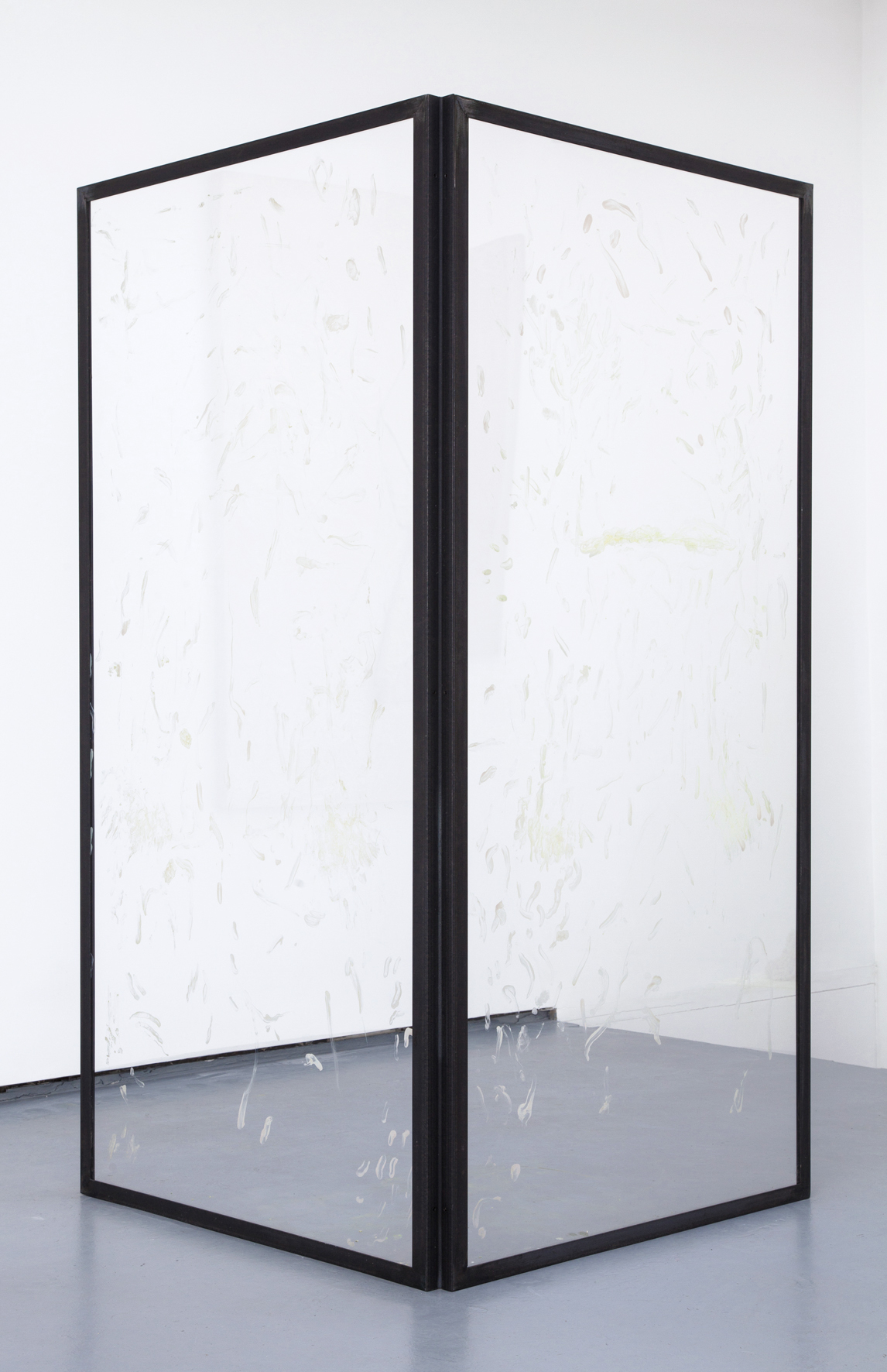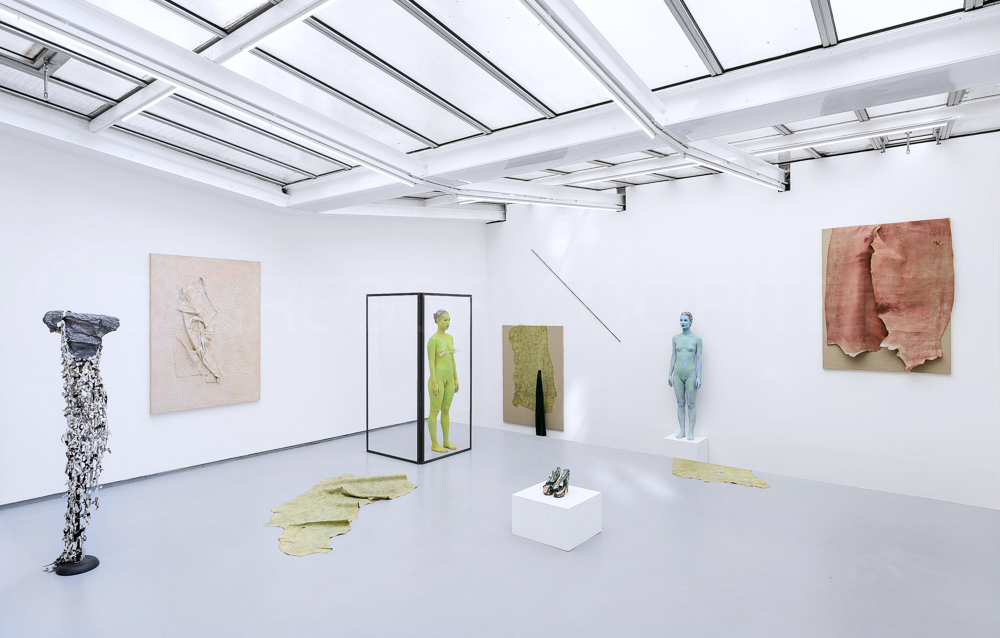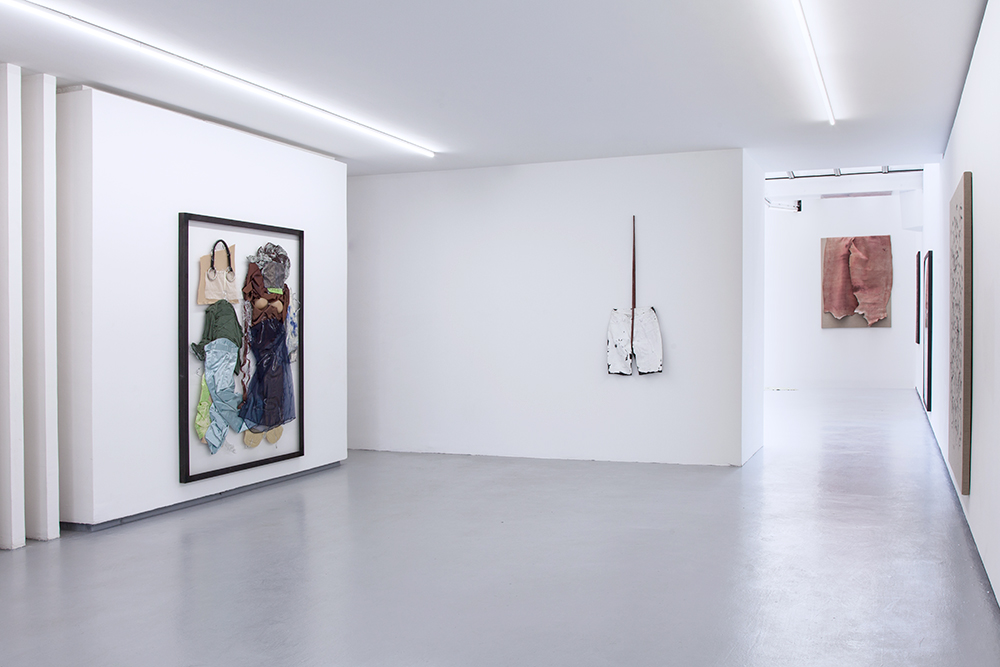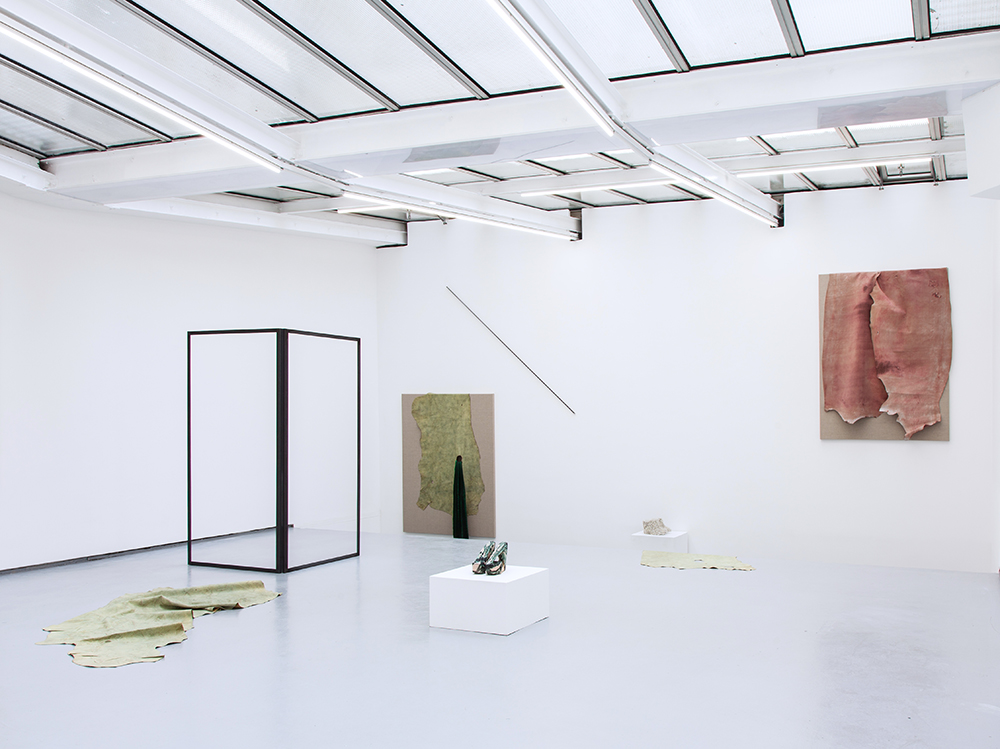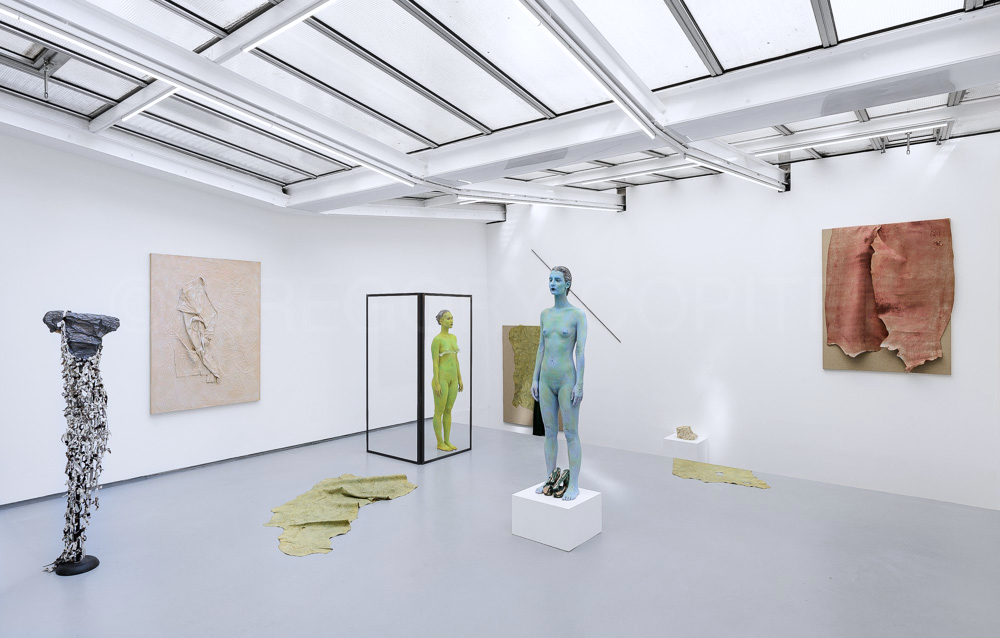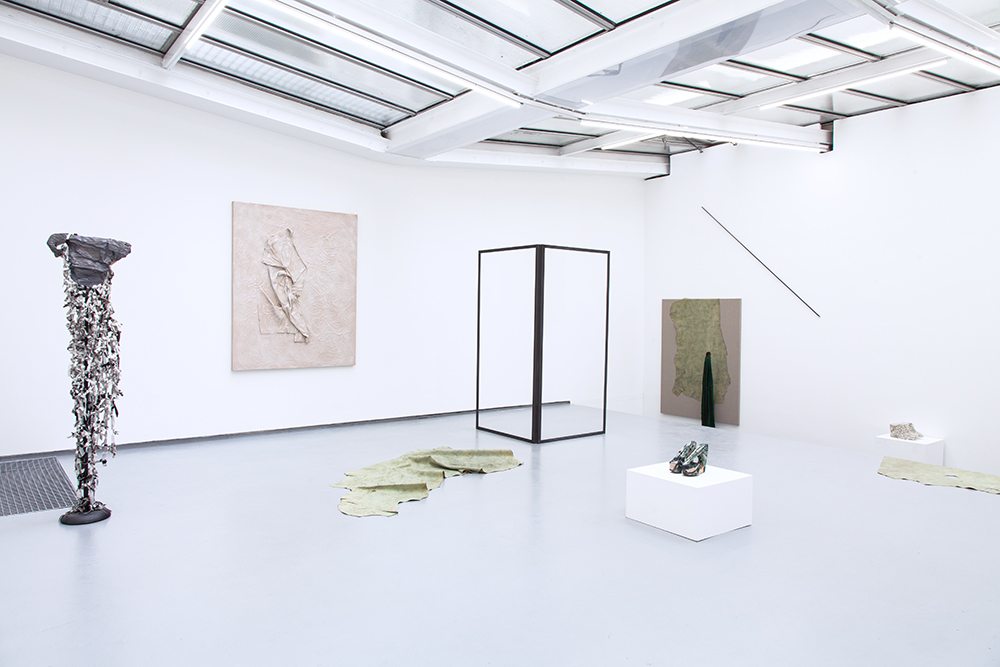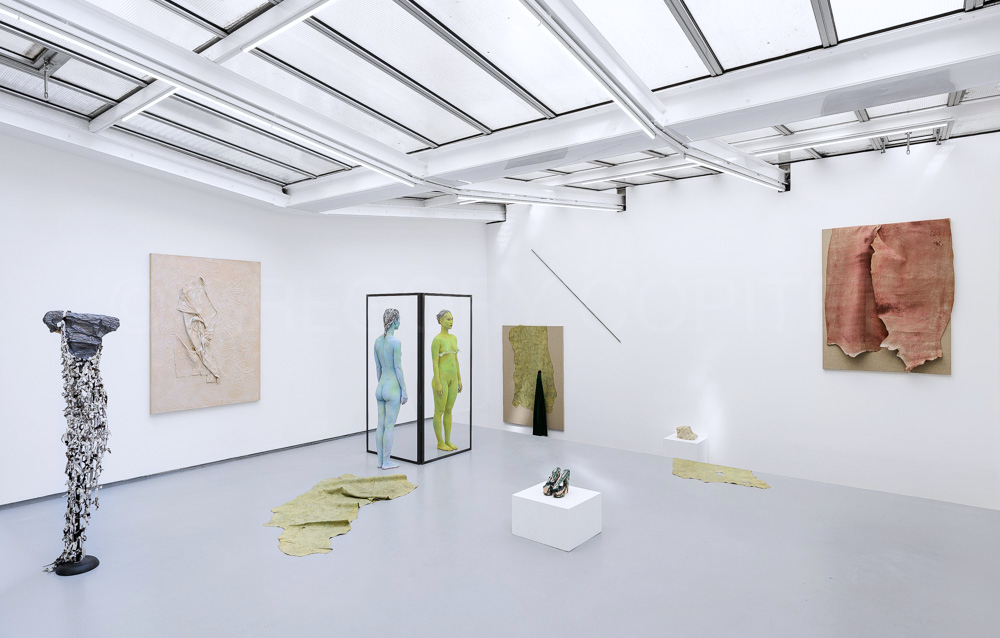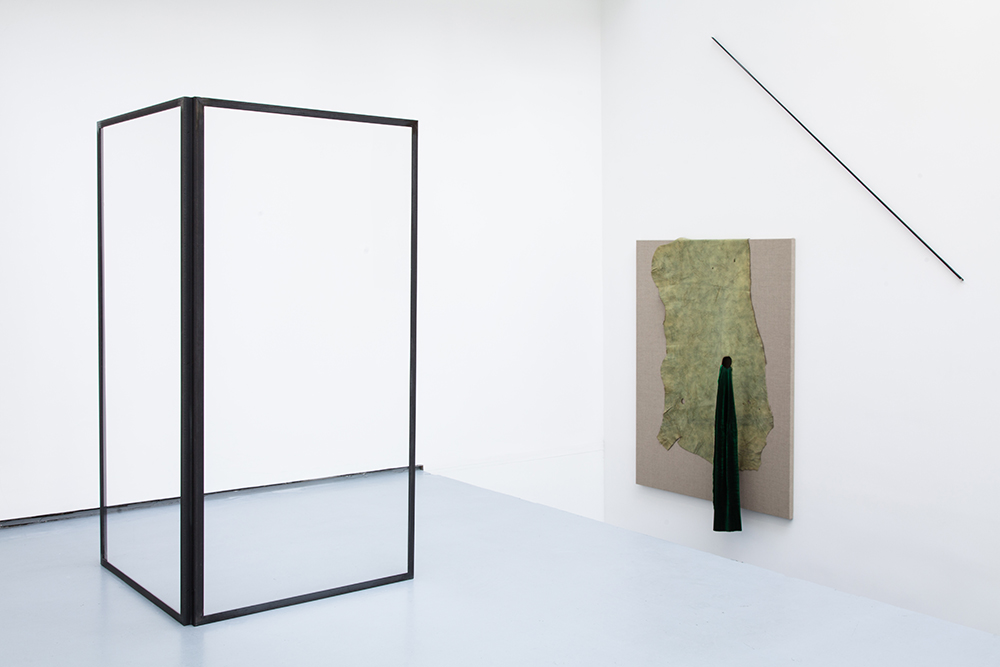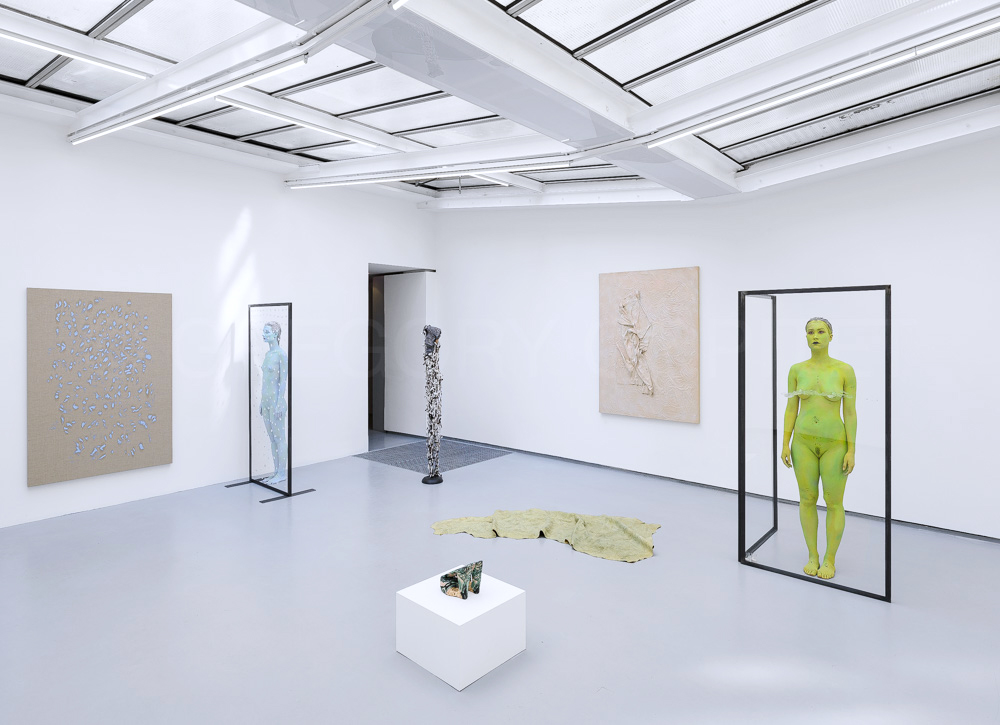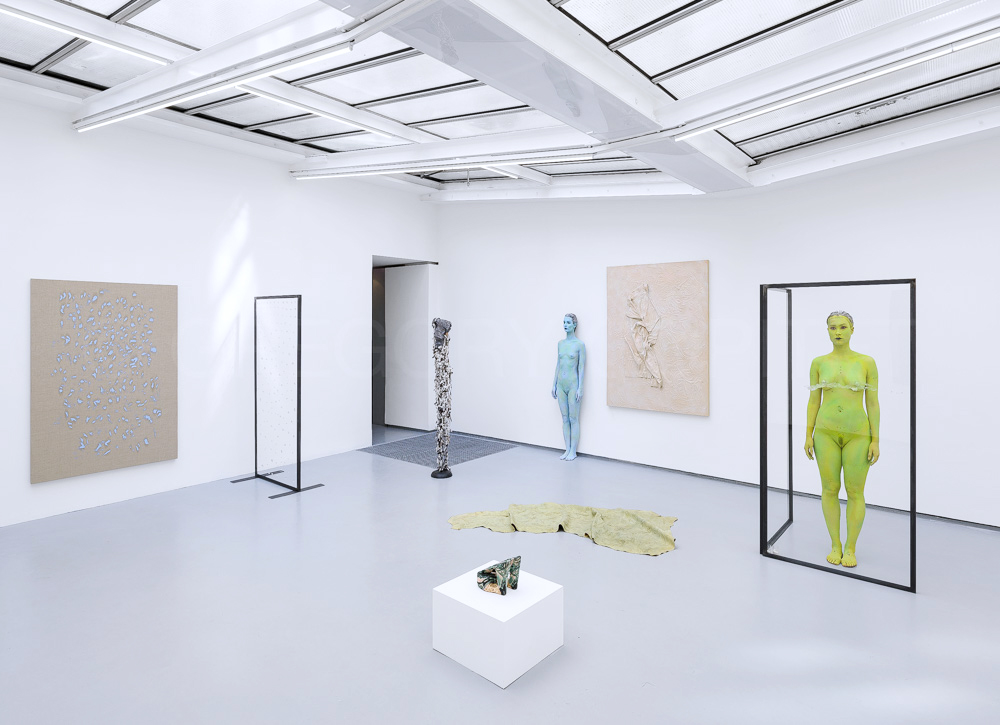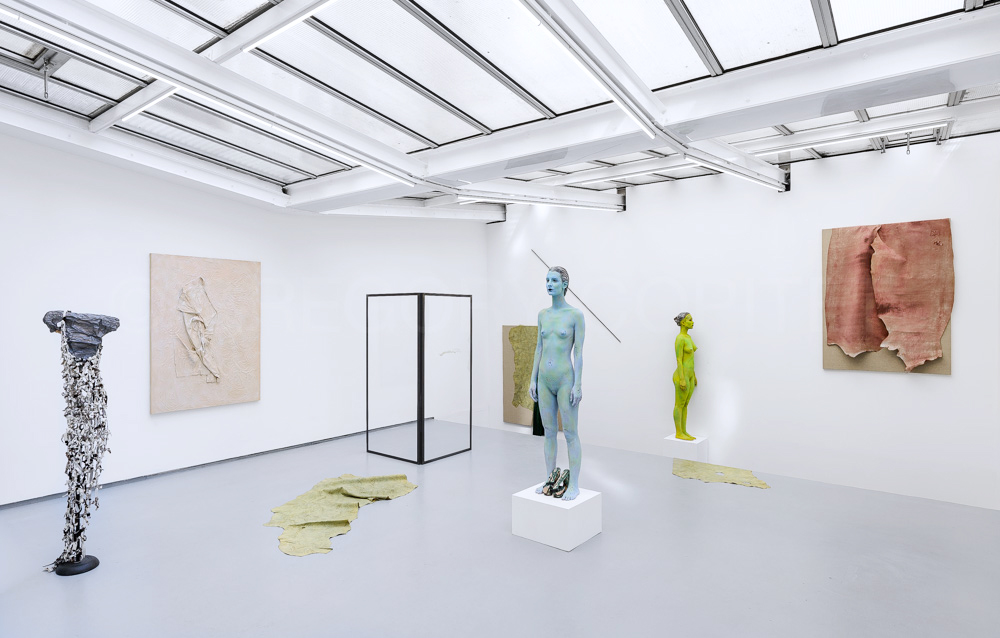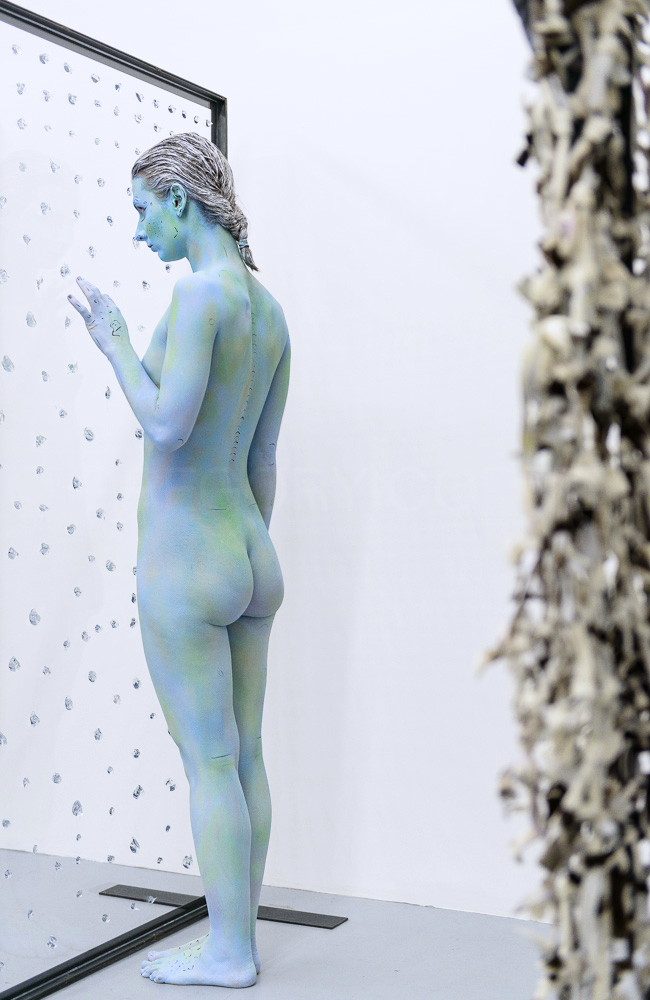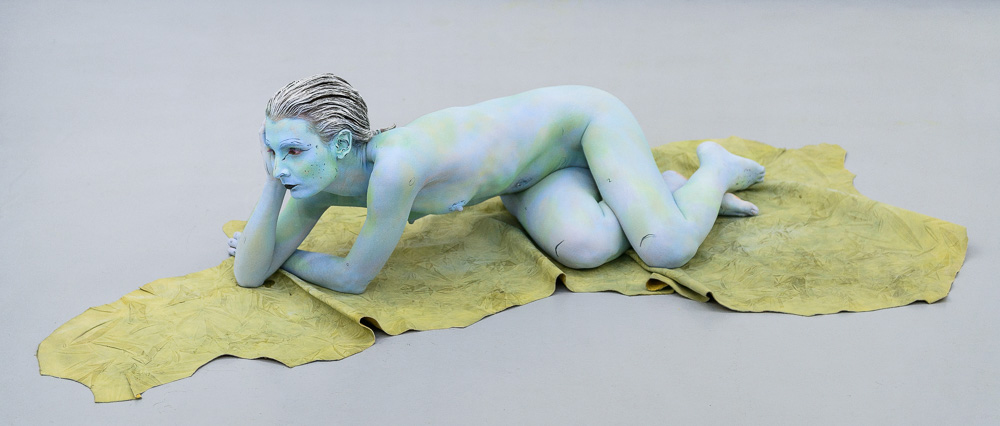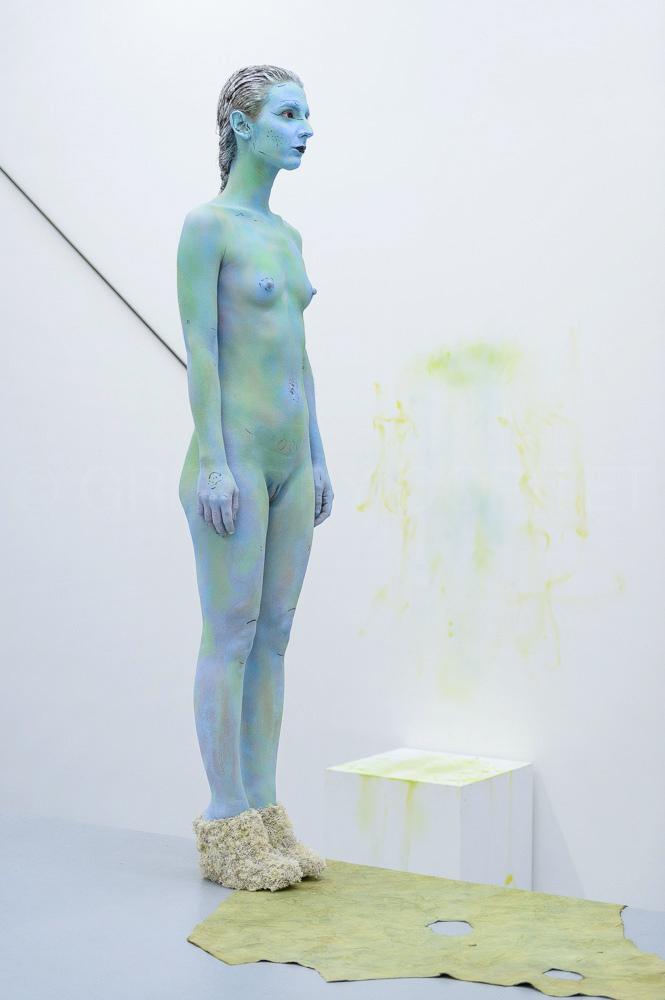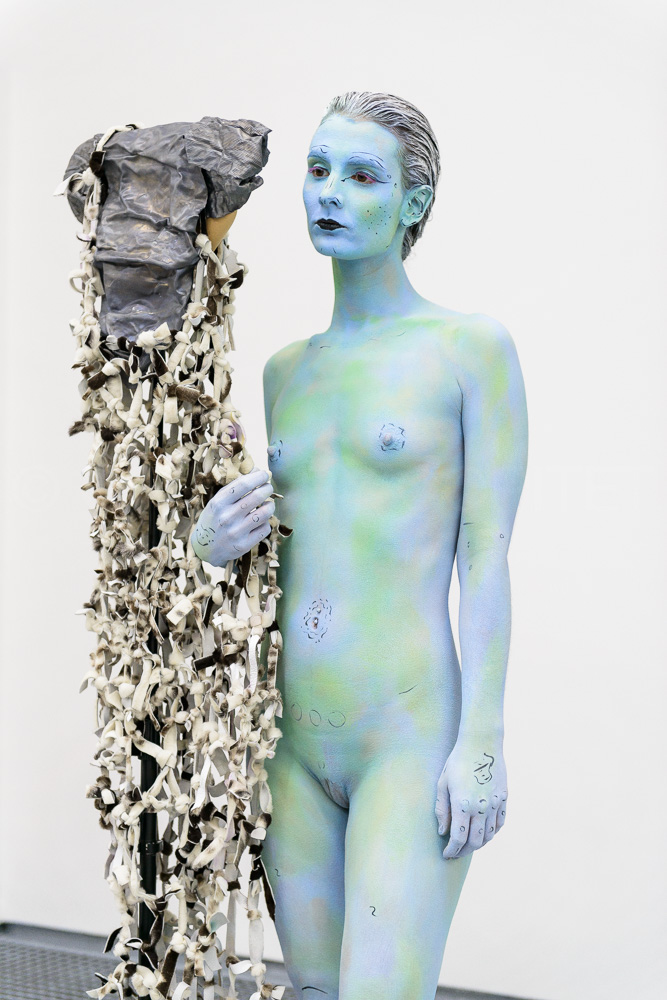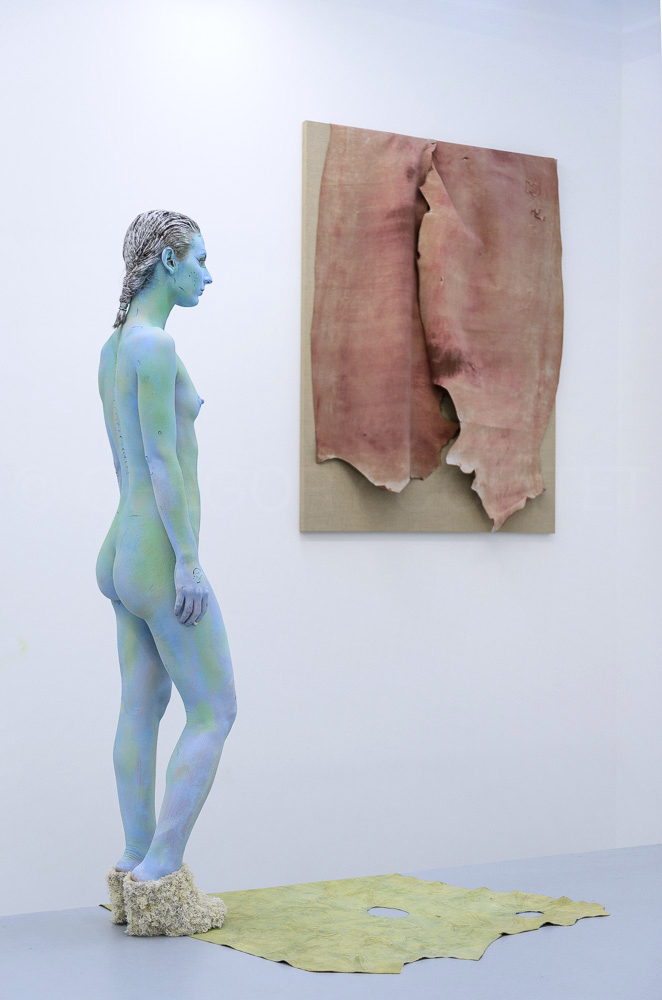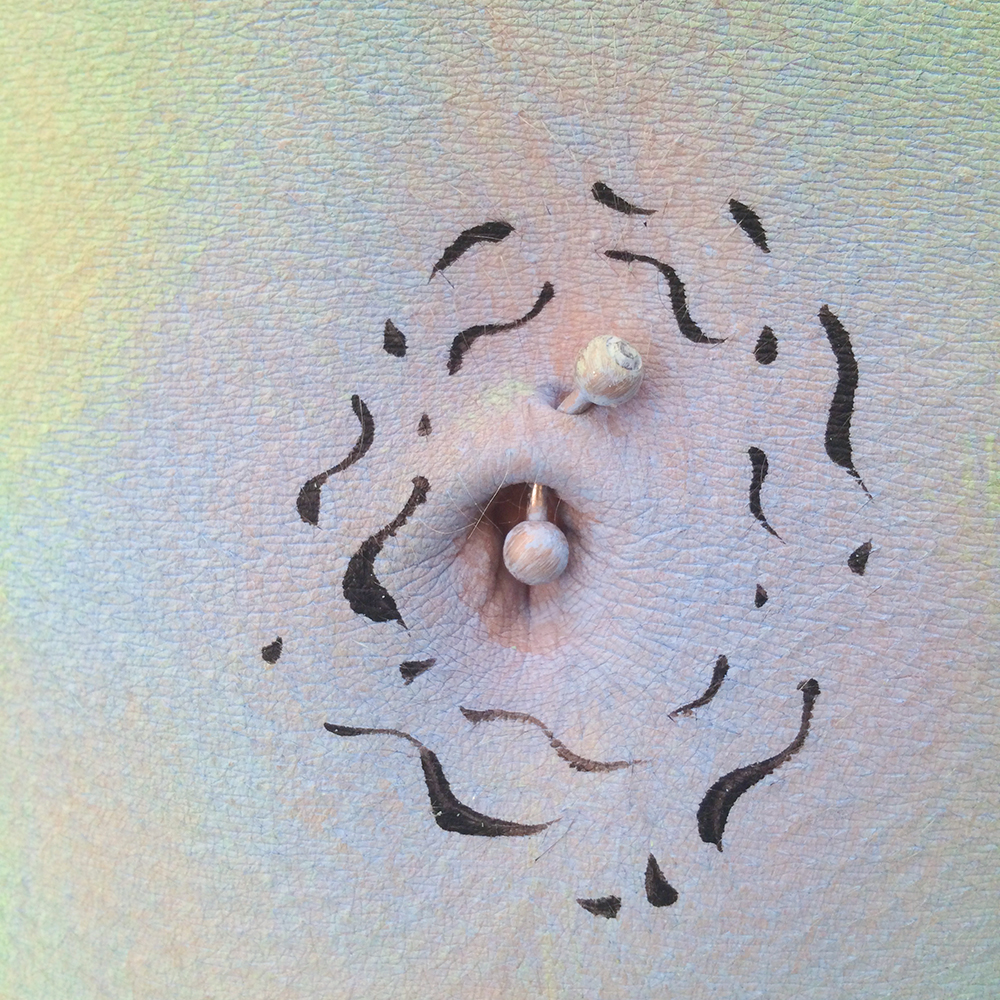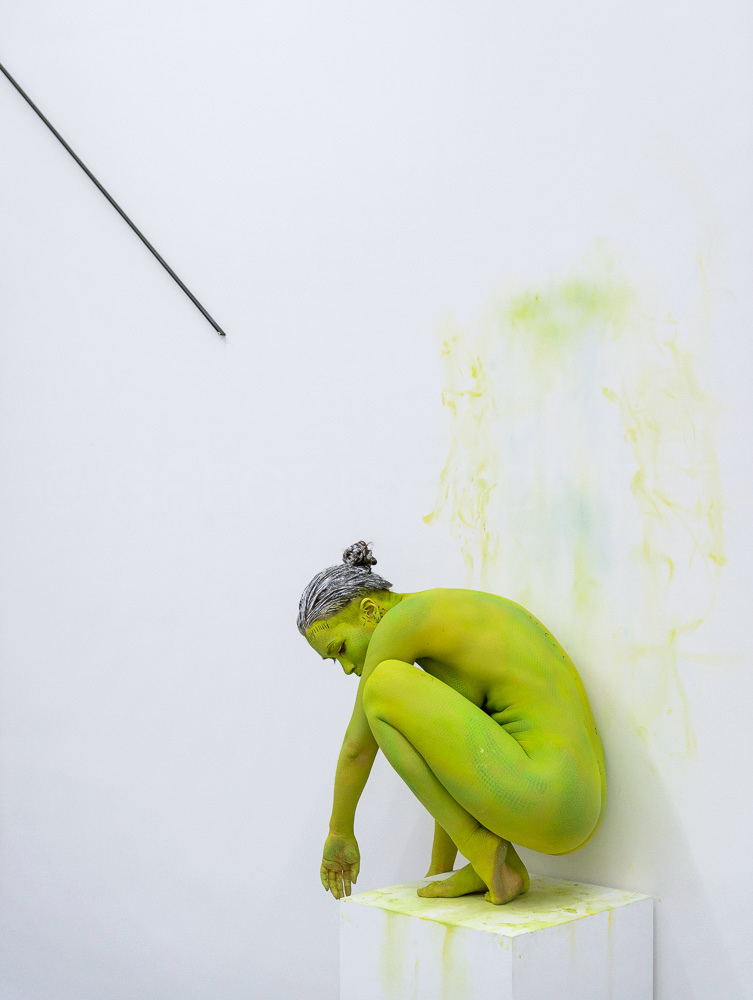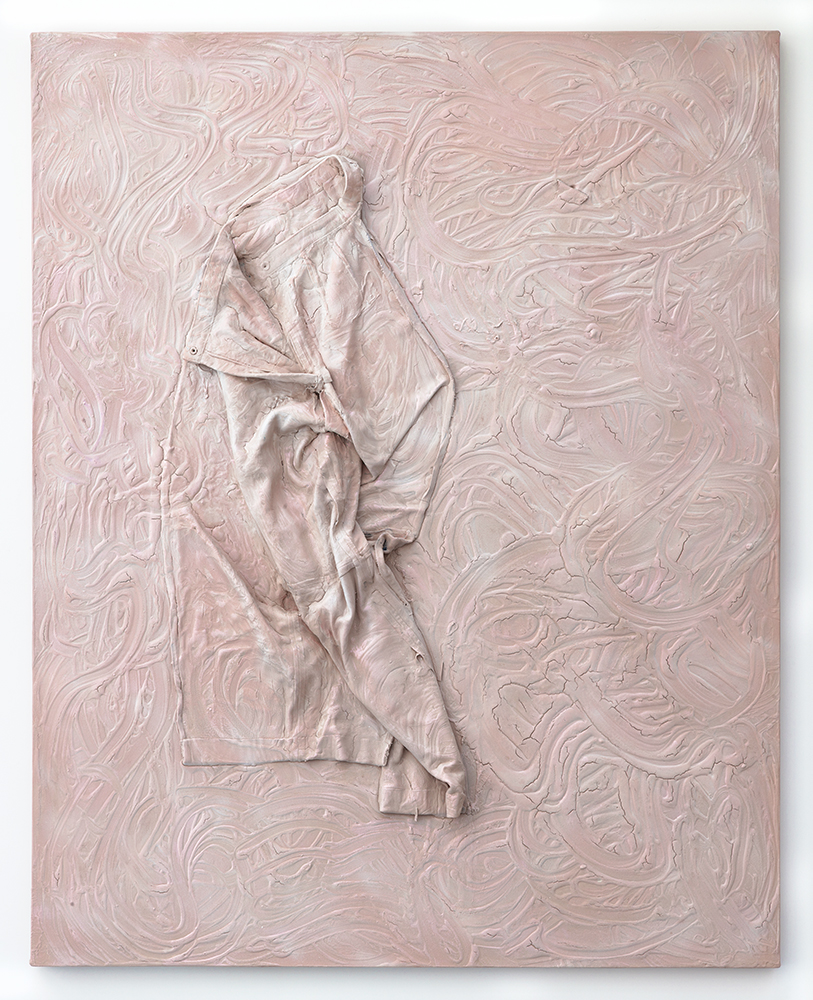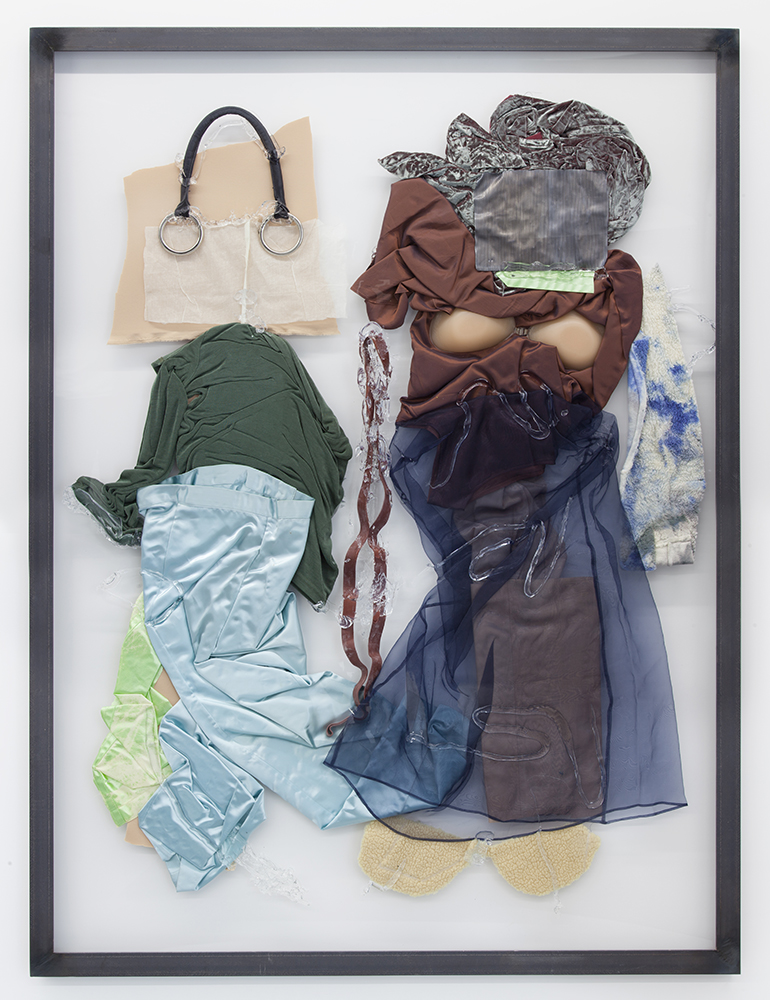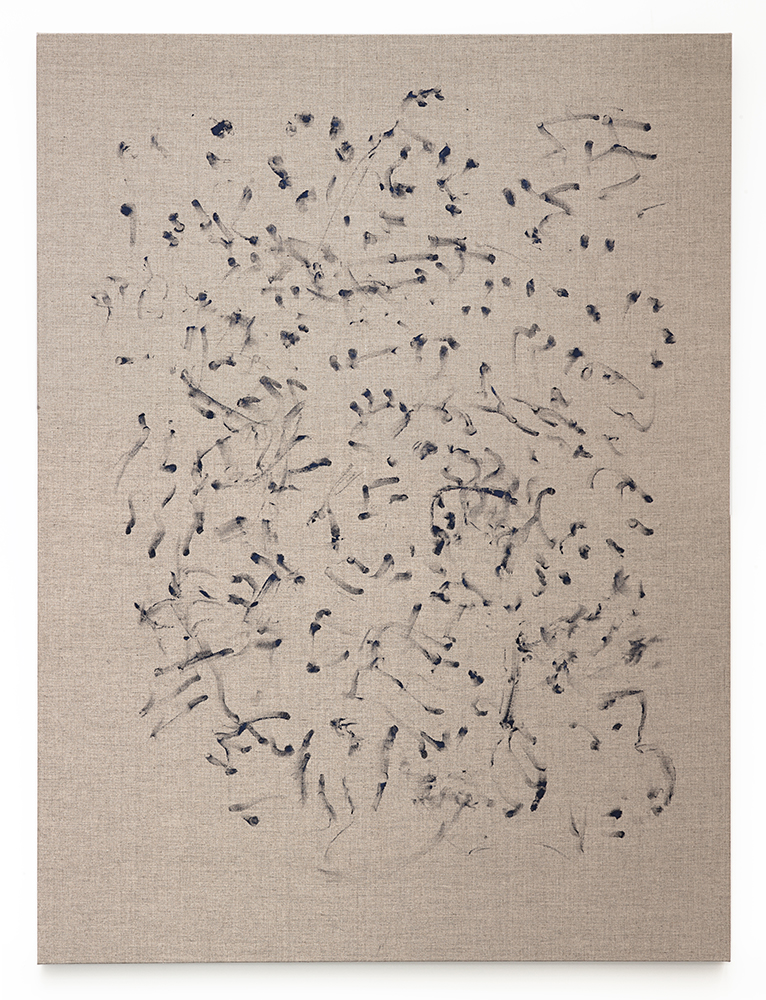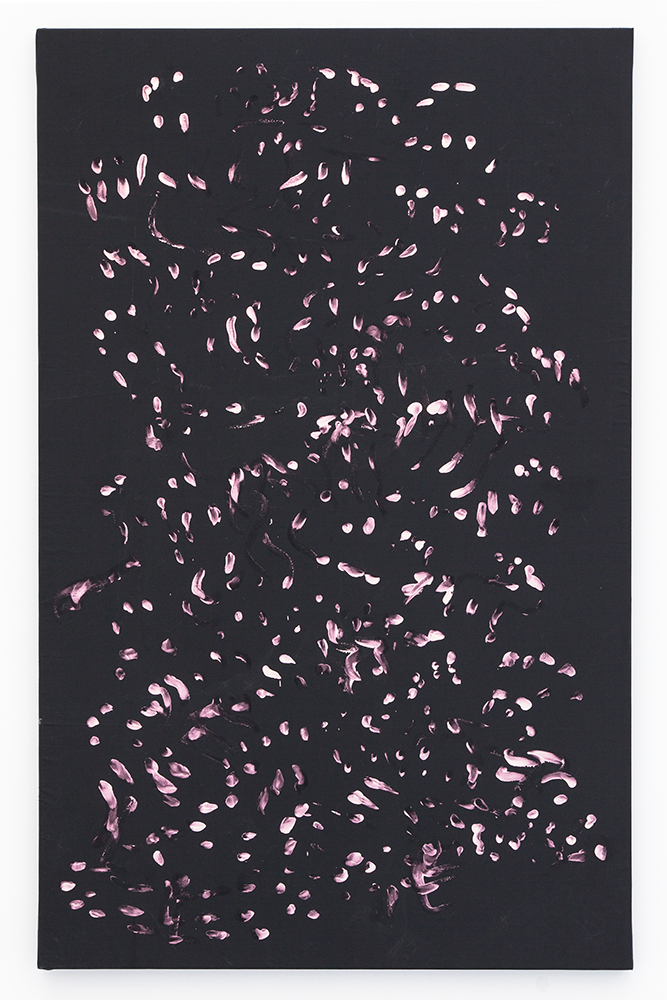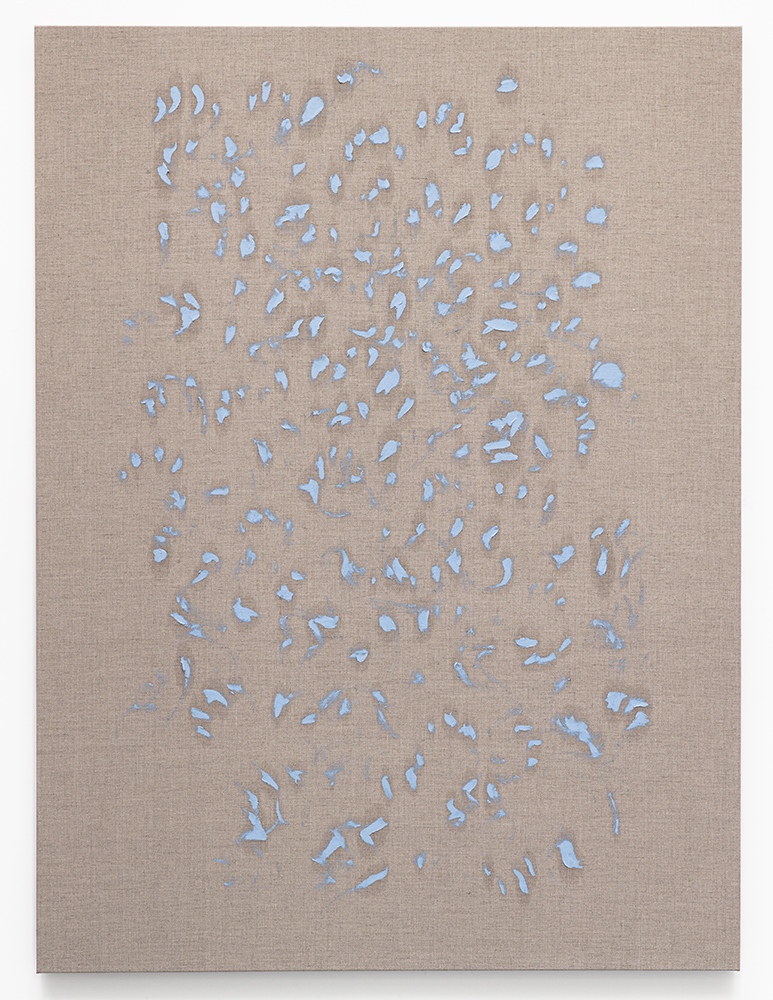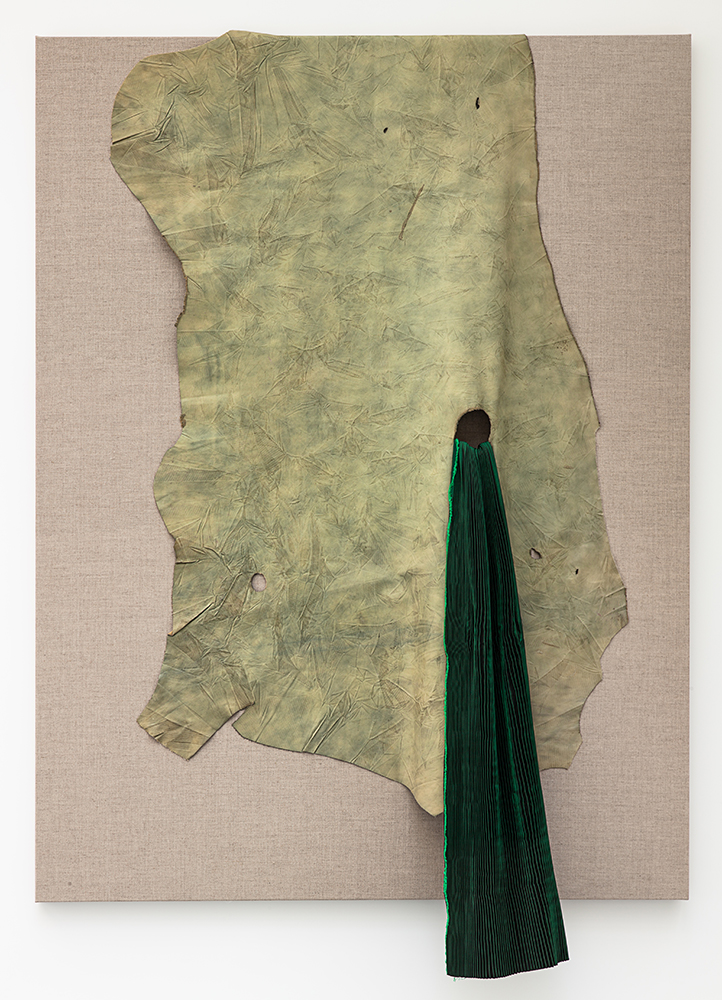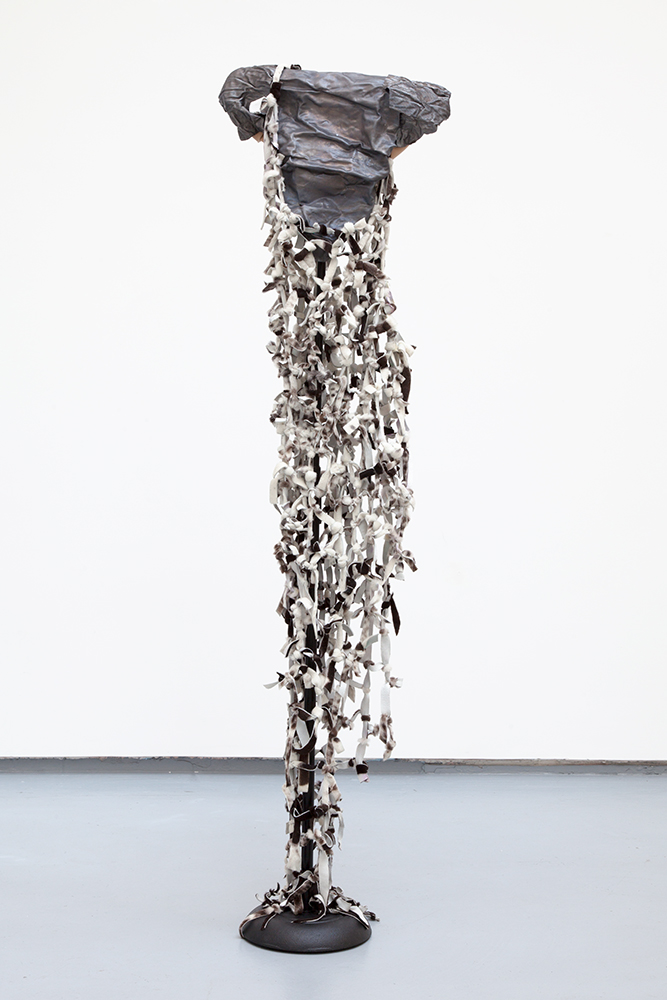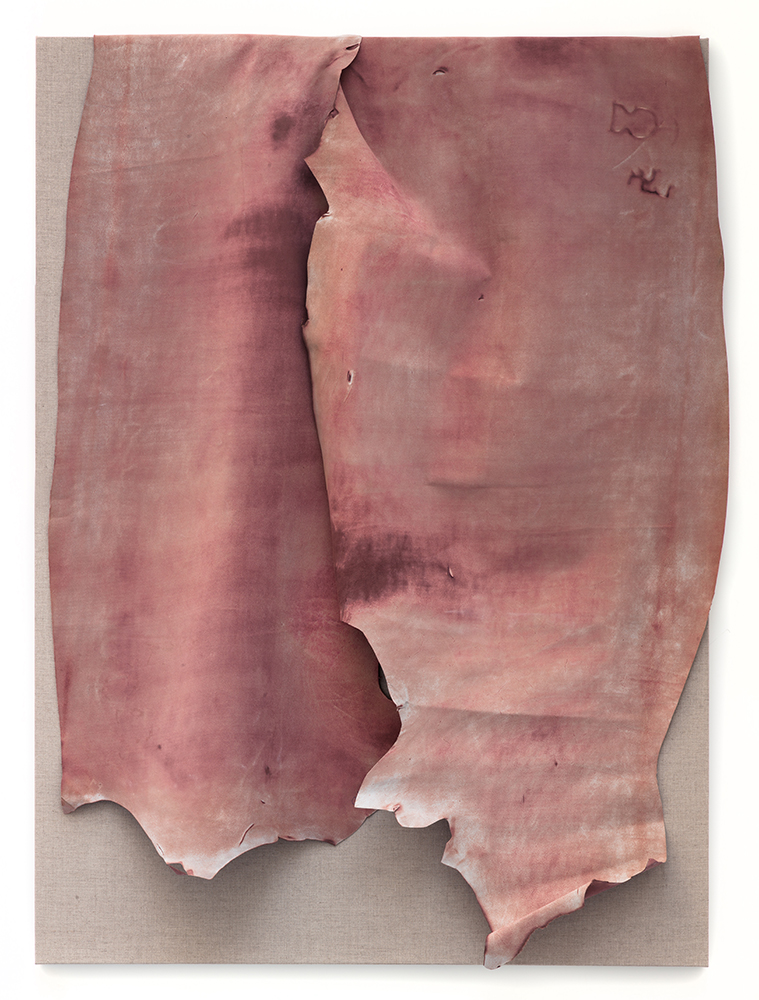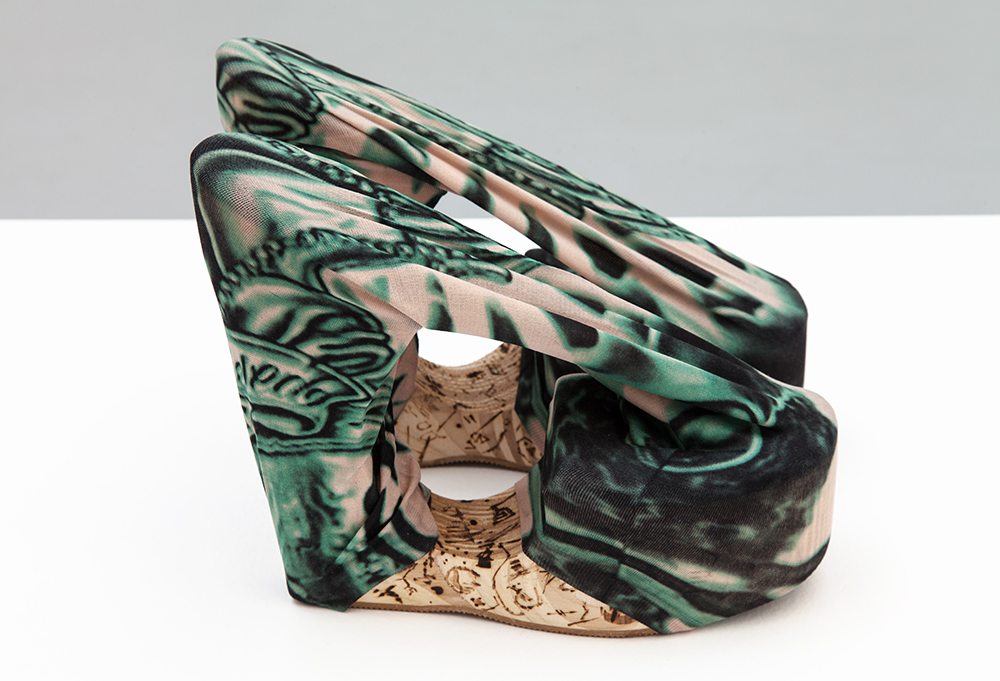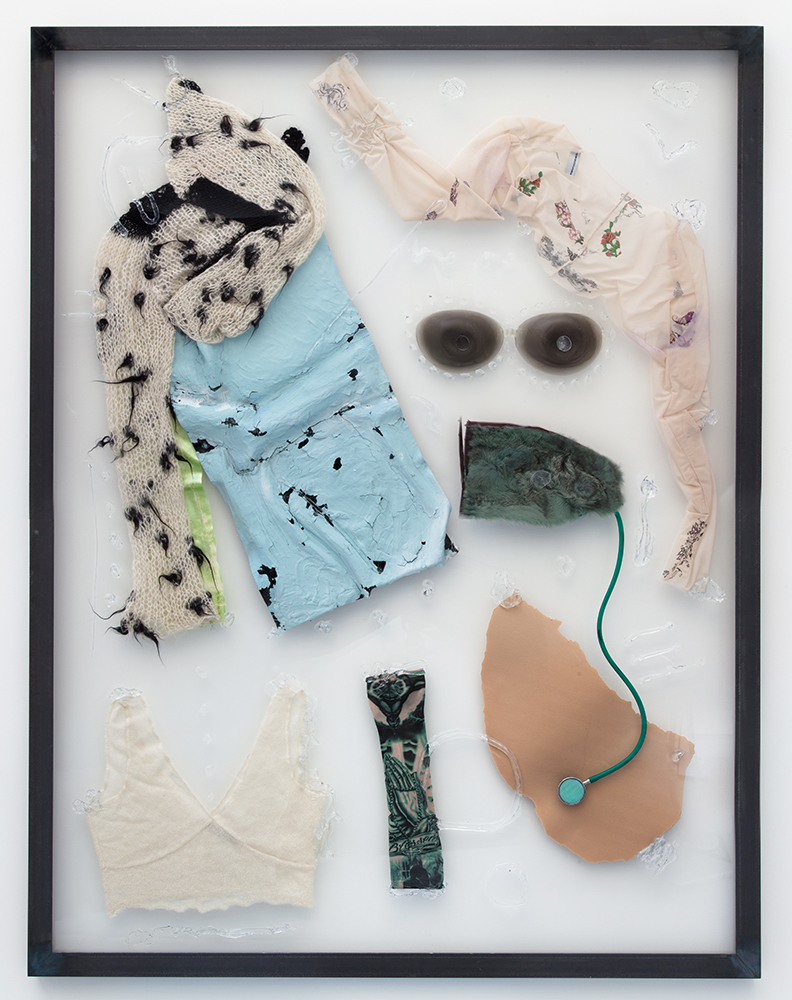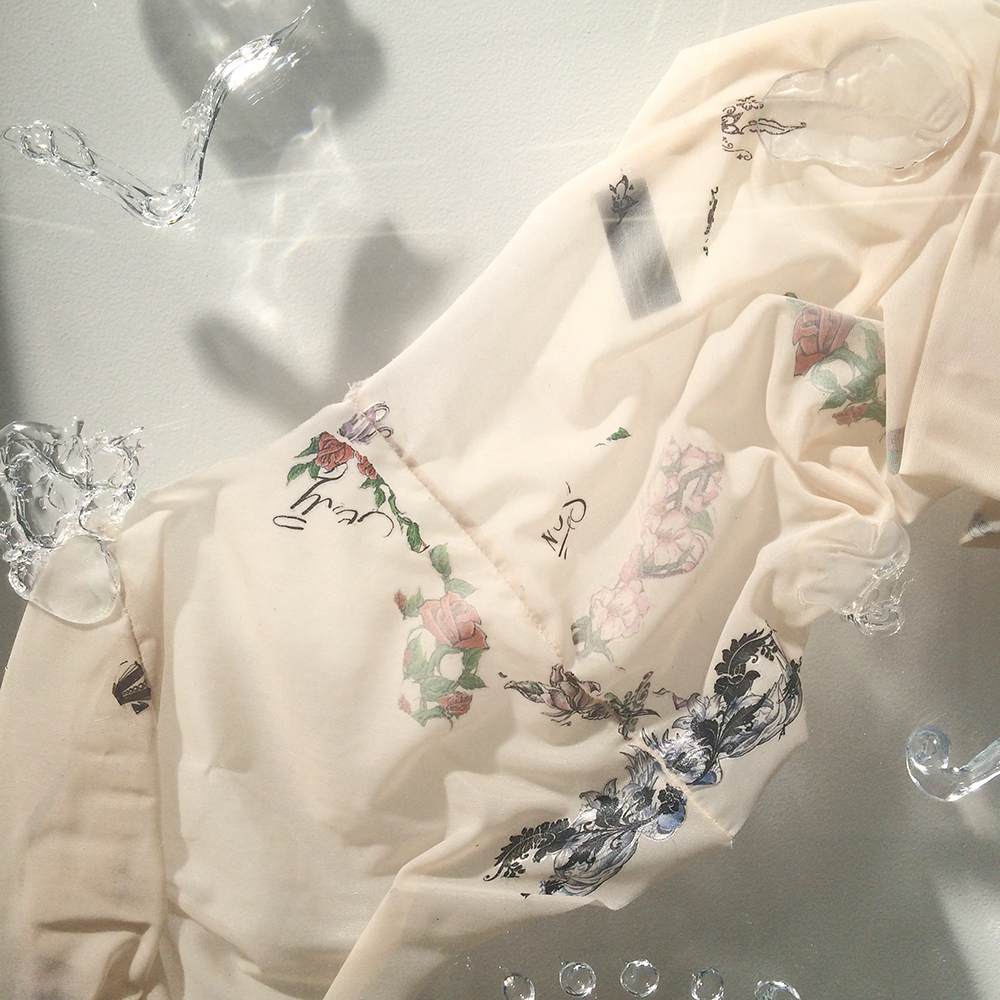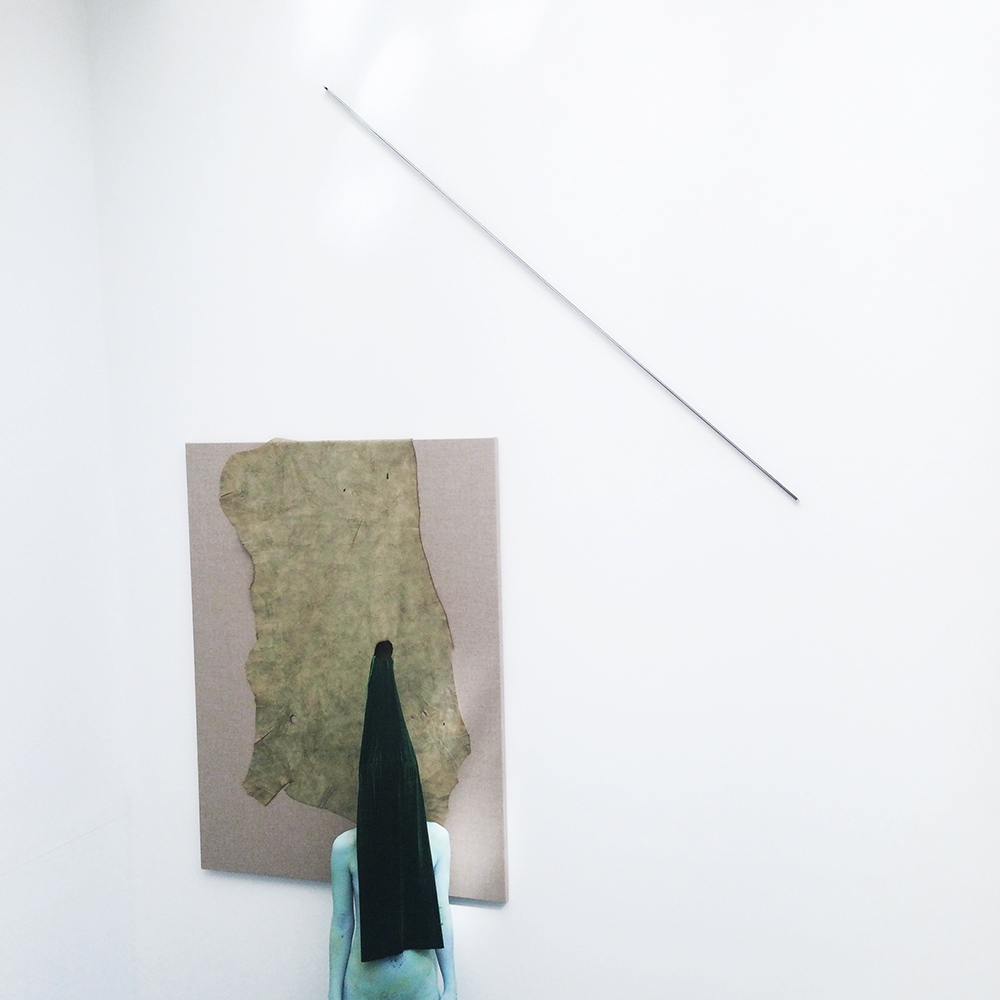WATER SCARS
April 18- May 16th, 2015
Valentin, Paris
Through her manipulation of clothing and skin, Donna Huanca uses the energy of objects to show the overdeveloped, fetishistic tactility of cultural processes, thereby activating a subconscious, prelinguistic memory.
Clothing—inserted in rituals that define the body’s everyday intimacy and social practices—is a cultural transmission medium, a subjectification tool, but also an interface steeped in anxiety.
As a way of assimilating and appropriating, it appears here as a process of identity-construction and as denaturalisation. In her performance installations, makeup modifies the person by an instrumental coefficient in which the self-staging ceremony no longer aims to be part of a relationship of alterity, but rather one of dissimulation, fusion, camouflage—furnishing the beginnings of a sometimes-absurd poetic narrative on the fragmentation of identity.
This attention to the spiritual dimension of the envelope is all about examining the body’s contemporary discourse, the space-time of the hesitant metamorphosis between rebirth and depersonalisation. In an ever-ambivalent, unrhetorical way, Donna Huanca shows how the body is sculpted by its environment, determined by a process of mimetic absorption, driven to forms of dissolution that the artist makes seem like psychotropic methods of depersonalisation and a liberating form of schizophrenia.
The artist’s large-scale installations combine tactile materials, clothing, shoes, fabrics or found objects, which she deconstructs and freezes in the painting. Recombined with plastic or latex materials, or superimposed in layers on stretchers, the used or worn objects give rise to new artefacts. Linked in space through a network of semantic and plastic connections, the static elements are activated during performances, in which living models, infused and crystallised in the installation, start interacting with the works.
The body always remains the central agent in the succession of tableaux vivants. The ecstatic or impassive attitudes of the models causes them to ceaselessly evolve, from reverence and withdrawal towards a vulnerability, due to the breaking of that protective barrier, as a result of their overexposure. Thus camouflage and make-up, this dressing up and burying create a constant confusion between predation and seduction, sensual pleasure and cruelty.
Between control and spontaneity, whether consecrated and raised on podiums or exhibited under glass, reassembled into a totem, the bodies and the objects are inserted into an allegorical system that places self-care rituals and contemporary hedonism alongside archaic and primitive forms of socialisation. The emergence of identity through a series of artifices, stagings and masks shields it from the ascendency of rituals, but only in order to immediately give it over to a stressful multiplicity of perspectives.
Text by Clara Guislain
